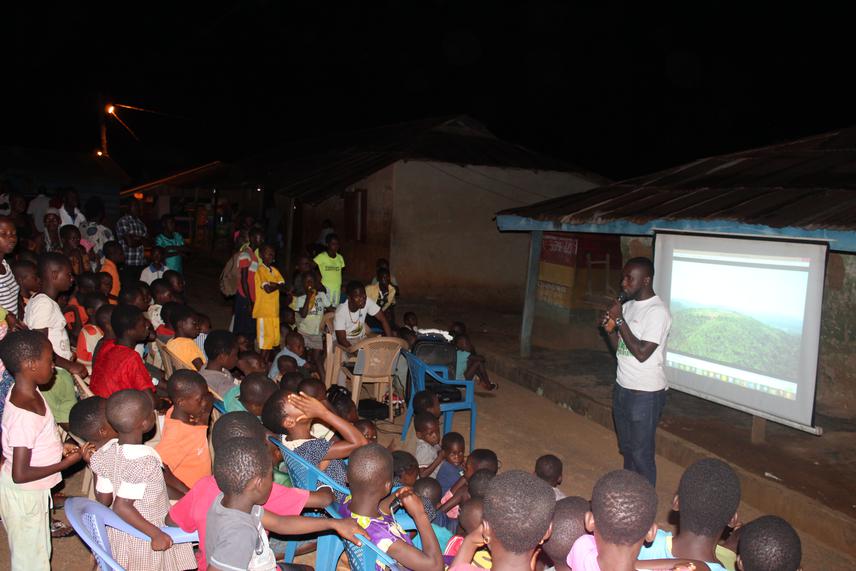David Amaning Kwarteng
The Bobiri reed frog was first described from the Bobiri Forest Reserve in Ghana. However, the species have not been seen in the Bobiri forest for more than a decade. Recent herpetological surveys in the forest have also failed to detect the species. Fortunately, a viable population has been established in Atewa Forest. The Atewa Forest is threat-defined as it has been earmarked for bauxite mining by the Government of Ghana. Previous efforts have been made towards ensuring the long-term sustainability of the species in the reserve. This has resulted in the listing of the species from endangered to Vulnerable. Also, more than 3000 community members are now aware of the plight of the conservation status of H. bobirensis in the range. About 100 community members have been trained and supplied with inputs to establish alternative nature-based green livelihood income options such as the beekeeping and grasscutter rearing in order to reduce their dependence on the reserve. Whiles these outcomes constitute important conservation success, threats to species such as habitat destruction, collection of non-timber forest products from the species core range as well as hunting still persist.

Conservation education
The IUCN SSC Amphibian specialist group high priority conservation recommendation on the species is providing improved protection of the remaining forest against encroachment, illegal logging and farming, while undertaking further surveys on the species (Rödel et al. 2005, IUCN 2019). This project will therefore train local rangers to patrol the species habitat, expand conservation education outreaches and behaviour change campaigns to 10 more key communities and increase sustainable livelihood beneficiaries by at least 100. Additionally, the project also intends to survey all historical sites of the Bobiri reed frog to documents its presence or absence. This population estimation will form the basis to review the current redlist status of the species, to solicit the appropriate conservation attention for the species. The outputs of this project will ultimately help sustain the conservation success gained so far on the species conservation.